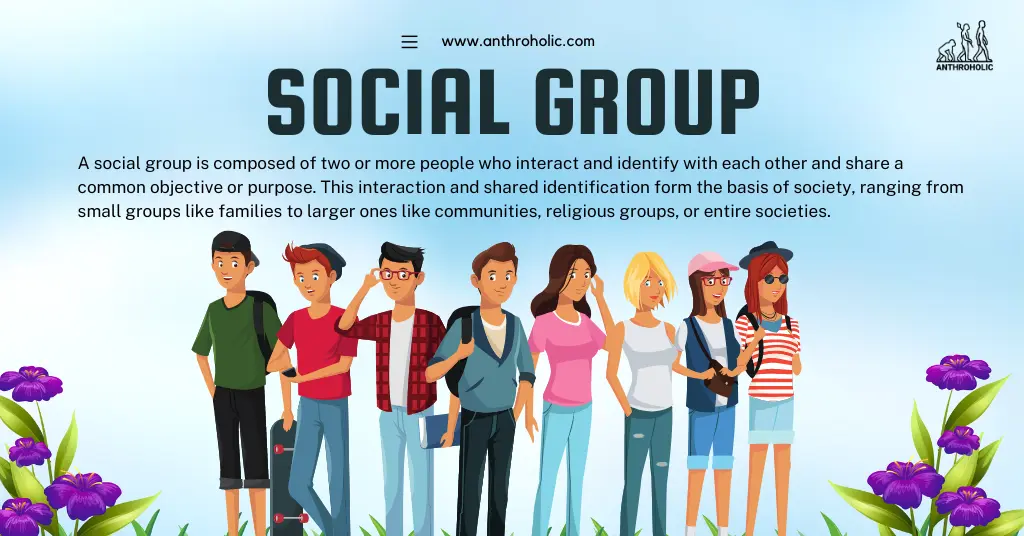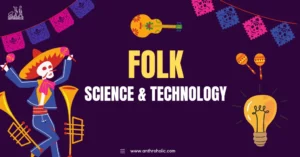AI Answer Evaluation Platform Live Now. Try Free Answer Evaluation Now
Social Groups
A social group is composed of two or more people who interact and identify with each other and share a common objective or purpose. This interaction and shared identification form the basis of society, ranging from small groups like families to larger ones like communities, religious groups, or entire societies.

Key Components of a Social Group
- Regular Interaction: Members often interact with each other in structured, predictable ways.
- Shared Identity: Members view themselves as a distinct entity separate from other groups.
- Common Goals or Interests: Members generally share a common purpose or objective.
Types of Social Groups
There are various types of social groups classified based on different criteria.
Based on Relation and Mutual Interaction
- Primary Groups: These are intimate, enduring groups like families and close friends. The relationships are emotional, personal, and long-lasting.
- Secondary Groups: These are larger and more impersonal groups where the relationships are temporary and goal-oriented, like corporations or student bodies.
Based on Structure and Organization
- Formal Groups: These are highly structured groups with clear roles, responsibilities, and rules. They include government bodies, corporations, or sports teams.
- Informal Groups: These are loosely organized groups without strict rules, roles, or responsibilities, like a group of friends or a neighborhood association.
| Types of Social Groups | Examples |
|---|---|
| Primary Groups | Families, Close Friends |
| Secondary Groups | Corporations, Student Bodies |
| Formal Groups | Government Bodies, Sports Teams |
| Informal Groups | Group of Friends, Neighborhood Association |
The Importance of Social Groups
Social groups have immense significance in shaping human behavior, attitudes, and identities.
Behavior
- Social groups set norms and standards, guiding members’ behavior.
- They can encourage or discourage certain actions based on the group’s shared values.
Attitudes
- They help form and change attitudes through shared beliefs and collective thinking.
- They influence how members view and respond to different social, political, or environmental issues.
Identity
- They provide a sense of belonging and identity to their members.
- They help individuals define themselves in relation to others.
Dynamics of Social Groups
Understanding the dynamics within a social group allows us to comprehend how they function and influence members. These dynamics include:
Roles
- Every member in a group tends to have a role, which dictates their responsibilities and behavior within the group.
- Roles can be formal (president, secretary) or informal (jokester, peacemaker).
Norms
- Norms are the unwritten rules that govern behavior within the group.
- They can range from codes of conduct, such as how to dress, to behavioral expectations, like how to treat other members.
Status
- This refers to the level of respect, competence, or deference given to individuals within the group.
- Status can be ascribed (based on attributes like age or gender) or achieved (based on skills, achievements).
Power
- Power within a group is typically distributed unevenly, and those with more power can influence group decisions.
- Power can stem from status, control over resources, or the ability to dispense rewards or punishments.
The Influence of Social Groups on Society
On a larger scale, social groups significantly impact the formation and operation of society.
Social Order
- Groups form the building blocks of society and establish norms that create social order.
- Larger societal norms often derive from the rules and values established in social groups.
Social Change
- Groups can collectively exert influence to bring about social change.
- Movements for social justice, political change, or environmental sustainability often begin with small social groups.
Social Support:
- Groups can offer social support to individuals during challenging times.
- They can act as sources of emotional comfort, practical assistance, or information exchange.
Formation of Social Groups
The formation of social groups can be a complex process influenced by a range of factors.
Similarity
- People are attracted to others who share similar interests, attitudes, or backgrounds.
- This is often the basis for forming groups like hobby clubs or religious congregations.
Proximity
- People tend to form connections with others who are physically close.
- This is why neighborhoods, schools, or workplaces often become social groups.
Common Goals
- People may form a group to achieve a common goal, such as a project team in a company or a group of activists.
Complementary Needs
- Groups may also form when individuals’ needs complement each other.
- This is often the case in professional settings where different skills are needed to achieve a common objective.
Group Cohesion and Conflict
Once a social group is formed, certain dynamics come into play that can either strengthen or disrupt the group.
Cohesion
- This is the sense of solidarity or bonding among members, which is crucial for the group’s longevity.
- It can be enhanced by shared experiences, success in achieving group goals, or effective leadership.
Conflict
- Conflicts within a group can arise due to differences in opinion, competition, or unequal distribution of resources or power.
- If managed properly, conflict can lead to productive discussions and innovative solutions. If not, it may lead to group dissolution.
Influence of Social Media on Social Groups
With the advent of social media, the dynamics and functioning of social groups have been impacted significantly.
Online Social Groups
- Social media platforms allow for the formation of online social groups based on shared interests, regardless of geographical proximity.
- These groups offer new ways of interaction and communication, often connecting people who would not have met otherwise.
Influence on Offline Groups
- Social media can also influence offline social groups, shaping group norms, attitudes, and behaviors.
- Information and opinions shared on social media can significantly impact a group’s shared understanding of various issues.
Social Groups in a Multicultural Society
In a multicultural society, social groups play a crucial role in both preserving diverse cultures and promoting intercultural understanding.
Cultural Preservation
- Social groups based on shared cultural or ethnic backgrounds can help preserve traditions, languages, and cultural practices.
- These groups offer a sense of community and belonging to individuals in a multicultural society.
Intercultural Understanding
- Interactions between different cultural or ethnic groups can promote mutual understanding and respect.
- Shared experiences in diverse groups can challenge stereotypes and reduce prejudice.
Conclusion
Social groups, whether large or small, online or offline, form the very fabric of human society. They offer individuals a sense of belonging and identity, influence their attitudes and behavior, and shape societal norms. As we navigate our increasingly global and digital world, understanding the dynamics and influence of social groups becomes even more critical. These groups, with their shared identities and objectives, remind us of the interconnectedness of human life and the commonalities that bind us together.
References
- Turner, J.C. (1987). Rediscovering the social group: Self-categorization theory. Basil Blackwell. https://psycnet.apa.org/record/1987-98657-000
- Cooley, C.H. (1909). Social Organization: A Study of the Larger Mind. Charles Scribner’s Sons.
- Homans, G.C. (1950). The Human Group. Routledge.
- Forsyth, D.R. (2018). Group Dynamics. Cengage Learning.
- Tuckman, B.W. (1965). Developmental sequence in small groups. Psychological Bulletin, 63, 384-399.
- Postmes, T., Spears, R., & Lea, M. (2000). The formation of group norms in computer-mediated communication. Human Communication Research, 26, 341-371.
- Berry, J.W. (2001). A psychology of immigration. Journal of Social Issues, 57, 615-631.




